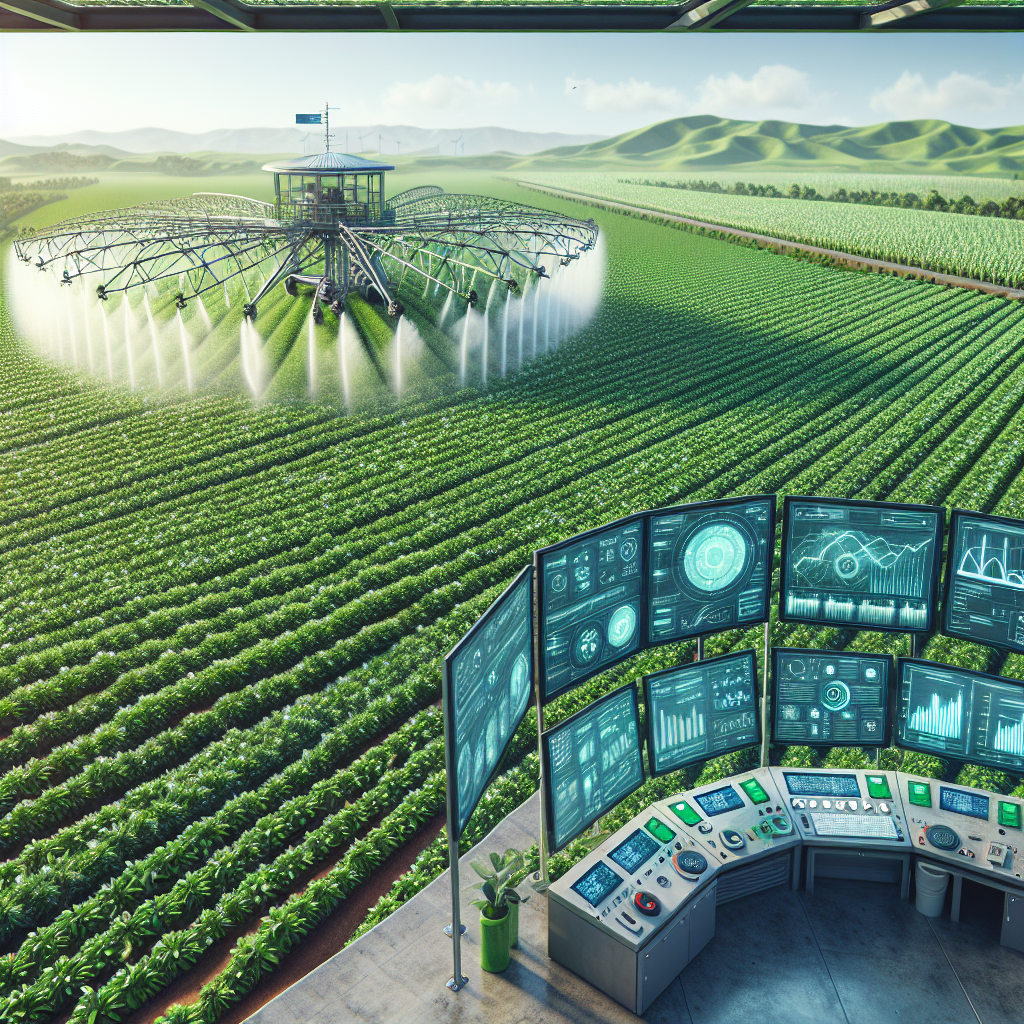Water management in agriculture is a critical issue that affects the productivity and sustainability of farming practices. With the increasing challenges posed by climate change, population growth, and water scarcity, it has become more important than ever to optimize water use in agriculture. Artificial intelligence (AI) is playing a crucial role in improving water management practices in agriculture by providing advanced solutions for monitoring, predicting, and optimizing water use efficiency. In this article, we will explore how AI is revolutionizing water management in agriculture and the benefits it brings to farmers and the environment.
AI technologies such as machine learning, computer vision, and IoT sensors are being used to develop smart irrigation systems that can monitor soil moisture levels, weather conditions, crop water requirements, and optimize irrigation schedules accordingly. These systems can detect patterns and trends in data to make accurate predictions about crop water needs, helping farmers to make informed decisions about when and how much water to apply. By automating the irrigation process and reducing water waste, AI-powered systems can improve water use efficiency, increase crop yields, and reduce production costs.
One of the key advantages of AI in water management is its ability to adapt to changing conditions in real-time. By continuously analyzing data from sensors and weather forecasts, AI systems can adjust irrigation schedules on the fly to optimize water use and minimize water waste. This dynamic approach allows farmers to respond quickly to fluctuations in weather patterns, soil conditions, and crop growth stages, ensuring that water is applied where and when it is needed most.
AI is also being used to optimize the use of other water resources in agriculture, such as groundwater and surface water. By analyzing historical data and using predictive modeling techniques, AI systems can help farmers to make more informed decisions about when to pump groundwater, how much to extract, and how to manage water resources sustainably. By optimizing water use and reducing reliance on unsustainable water sources, AI can help to protect water quality, preserve ecosystems, and promote long-term agricultural sustainability.
In addition to improving water management practices, AI is also helping farmers to reduce their environmental footprint by minimizing the use of chemical inputs and energy in agriculture. By integrating AI with precision agriculture technologies such as drones and satellite imagery, farmers can monitor crop health, detect pests and diseases, and apply targeted treatments only where and when they are needed. This precision approach not only reduces the use of water, fertilizers, and pesticides but also improves crop quality, reduces environmental pollution, and enhances biodiversity in agricultural landscapes.
Overall, AI is revolutionizing water management in agriculture by providing advanced solutions for monitoring, predicting, and optimizing water use efficiency. By automating irrigation systems, optimizing water resources, and reducing environmental impact, AI is helping farmers to improve crop yields, reduce production costs, and promote sustainable farming practices. As the challenges of climate change and water scarcity continue to grow, AI will play an increasingly important role in helping farmers to adapt to changing conditions and secure the future of agriculture.
FAQs:
Q: How does AI improve water management in agriculture?
A: AI technologies such as machine learning, computer vision, and IoT sensors are being used to develop smart irrigation systems that can monitor soil moisture levels, weather conditions, crop water requirements, and optimize irrigation schedules accordingly. By analyzing data and making accurate predictions about crop water needs, AI can help farmers to make informed decisions about when and how much water to apply, thus improving water use efficiency in agriculture.
Q: What are the benefits of using AI in water management?
A: The benefits of using AI in water management include increased crop yields, reduced production costs, improved water use efficiency, minimized environmental impact, and enhanced sustainability in agriculture. By automating irrigation systems, optimizing water resources, and reducing reliance on unsustainable water sources, AI helps farmers to improve their productivity, profitability, and environmental stewardship.
Q: How does AI help farmers to adapt to changing conditions in agriculture?
A: AI systems can adapt to changing conditions in agriculture by continuously analyzing data from sensors and weather forecasts, adjusting irrigation schedules in real-time, and optimizing water use efficiency accordingly. By responding quickly to fluctuations in weather patterns, soil conditions, and crop growth stages, AI helps farmers to make informed decisions about when and how much water to apply, thus ensuring that water is used where and when it is needed most.
Q: What are the challenges of implementing AI in water management?
A: The challenges of implementing AI in water management include the high cost of AI technologies, the complexity of integrating AI with existing irrigation systems, the need for technical expertise to operate AI systems, and the potential for data privacy and security concerns. However, as AI technologies become more affordable, user-friendly, and secure, the benefits of using AI in water management are expected to outweigh the challenges in the long run.
Q: How can farmers benefit from using AI in water management?
A: Farmers can benefit from using AI in water management by improving their crop yields, reducing their production costs, optimizing their water use efficiency, and minimizing their environmental impact. By automating irrigation systems, optimizing water resources, and adopting precision agriculture practices, farmers can increase their productivity, profitability, and sustainability in agriculture, thus securing their future in a changing climate and water-scarce world.

